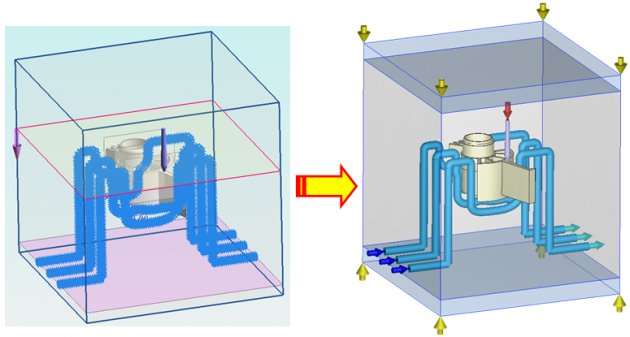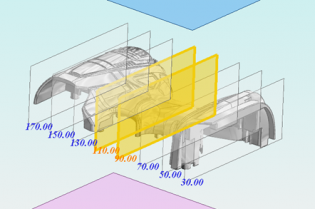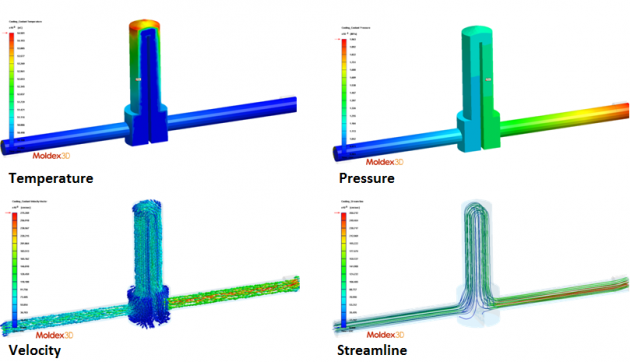Mar 16, 2015 -- In plastic injection molding, cooling time usually takes up at least two-thirds of the entire molding cycle. If the cooling time could be reduced effectively, the overall production efficiency can be greatly enhanced. Traditionally speaking, most of the cooling channels are designed and built by experienced engineers and molders. However, since the design of plastic products are getting more and more complicated, traditional cooling channels can no longer provide the best cooling efficiency for complex molding in order to fulfill the current industry’s needs and standards. As a result, conformal cooling technology was introduced under this context. With its significant benefits of providing effective cooling solution to complex molding, conformal cooling has become a vastly used cooling technology in the industry.
Moldex3D has cooperated with One Process Machining (OPM) laboratory Japan closely to develop a useful simulation tool: Cooling Channel Designer (CCD) for conformal cooling users. With Moldex3D CCD module, users can build conformal cooling channels according to the contour of product in a fast and intuitive way in Moldex3D Designer (Fig. 1). Moldex3D CCD provides flexible features which allow users to make cooling layout changes easily; mold designers can change the cooling design to make cooling channels closer to the molded products in the cavity. In this way, the temperature can be more evenly distributed, eliminating cold and hot spots inside the mold. Therefore, product defects caused by poor temperature control, such as residual stress, warpage, voids, and sink marks, can be greatly decreased.
 Fig. 1 Export cooling channels from CCD to Moldex3D Designer
Fig. 1 Export cooling channels from CCD to Moldex3D Designer
One of the unique features in CCD is the “slicing” function. With this function, users can slice up the imported part into several sections. And, based on each intersecting surface (cross section) of the part, users are able to design a better conformal cooling system (Fig. 2).
 Fig. 2 Moldex3D Cooling Channel Designer provides slicing function
Fig. 2 Moldex3D Cooling Channel Designer provides slicing function
Moldex3D Cooling Analysis can predict the required cooling time. This feature helps users evaluate how cooling layout design will affect overall cooling time. Moldex3D Cooling Analysis provides not only required cooling time, but also temperature variation inside the mold cavity. Moreover, through the true 3D cooling analysis technology, Moldex3D can further predict coolant flow rate, pressure loss and vortex/dead water areas.

Fig. 3 Moldex3D can visualize flow behavior such as
flow velocity, pressure, and temperature distribution
inside cooling channels
In summary, the integration between Moldex3D simulation and Cooling Channel Designer (CCD) can enhance the performance of conformal cooling design to optimize heat dissipation and achieve uniform cooling. This will help improve product quality, sink mark and warpage issues to create advantages through the reduction of cycle times and costs.








